|
|
|
Sort Order |
|
|
|
Items / Page
|
|
|
|
|
|
|
| Srl | Item |
| 1 |
ID:
162202
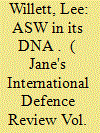

|
|
|
| 2 |
ID:
124636
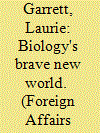

|
|
|
|
|
| Publication |
2013.
|
| Summary/Abstract |
In May 2010, the richest, most powerful man in biotechnology made a new creature. J. Craig Venter and his private-company team started with DNA and constructed a novel genetic sequence of more than one million coded bits of information known as nucleotides. Seven years earlier, Venter had been the first person in history to make a functioning creature from information. Looking at the strings of letters representing the DNA sequence for a virus called phi X174, which infects bacteria, he thought to himself, "I can assemble real DNA based on that computer information." And so he did, creating a virus based on the phi X174 genomic code. He followed the same recipe later on to generate the DNA for his larger and more sophisticated creature. Venter and his team figured out how to make an artificial bacterial cell, inserted their man-made DNA genome inside, and watched as the organic life form they had synthesized moved, ate, breathed, and replicated itself.
|
|
|
|
|
|
|
|
|
|
|
|
|
|
|
|
| 3 |
ID:
137678
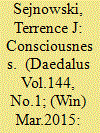

|
|
|
|
|
| Summary/Abstract |
No one did more to draw neuroscientists' attention to the problem of consciousness in the twentieth century than Francis Crick, who may be better known as the co-discoverer (with James Watson) of the structure of DNA. Crick focused his research on visual awareness and based his analysis on the progress made over the last fifty years in uncovering the neural mechanisms underlying visual perception. Because much of what happens in our brains occurs below the level of consciousness and many of our intuitions about unconscious processing are misleading, consciousness remains an elusive problem. In the end, when all of the brain mechanisms that underlie consciousness have been identified, will we still be asking: “What is consciousness?” Or will the question shift, just as the question “What is life?” is no longer the same as it was before Francis Crick?
|
|
|
|
|
|
|
|
|
|
|
|
|
|
|
|
| 4 |
ID:
116822
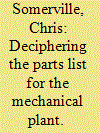

|
|
|
|
|
| Publication |
2012.
|
| Summary/Abstract |
The development of inexpensive DNA sequencing technologies has revolutionized all aspects of biological research. The proliferation of plant genome sequences, in conjunction with the parallel development of robust tools for directed genetic manipulation, has given momentum and credibility to the goal of understanding several model plants as the sum of their parts. A broad inventory of the functions and interrelationships of the parts is currently under way, and the first steps toward computer models of processes have emerged. These approaches also provide a framework for the mechanistic basis of plant diversity. It is hoped that rapid progress in this endeavor will facilitate timely responses to expanding demand for food, feed, fiber, fuel, and ecosystem services in a period of climate change.
|
|
|
|
|
|
|
|
|
|
|
|
|
|
|
|
| 5 |
ID:
099101
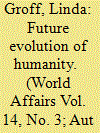

|
|
|
| 6 |
ID:
126248
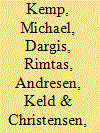

|
|
|
|
|
| Publication |
2012.
|
| Summary/Abstract |
In 2002 it was decided to establish laboratory facilities in Denmark for diagnosing agents associated with bioterrorism in order to make an immediate appropriate response to the release of such agents possible. Molecular assays for detection of specific agents and molecular and proteomic techniques for identification of bacteria were introduced as part of the program. All assays and techniques were made accessible for use in diagnosing patients, even when an intentional release was not suspected. Medical expertise on different diseases was established at the department as an integrated part of the program. The analyses included PCR assays for specific bacteria, identification of isolated bacteria by DNA sequencing, detection and identification of bacteria in clinical sample material by universal bacterial PCR and DNA sequencing, and identification of bacteria by mass spectrometry. The established analyses formed a basis on which a series of further developments was built. In addition to reducing the time for obtaining diagnoses and improving the accuracy of diagnosis of individual infected patients, the analyses provided new knowledge on the frequency and distribution of some bacterial infections, including Q fever, tularemia, trench fever, brucellosis, and melioidosis. The implementation of an antibioterrorism program in a clinical diagnostic setting improved the diagnostic possibilities for patients in Denmark and provided new epidemiologic information. It also introduced a number of diagnostic assays for bacterial infections not associated with bioterrorism that are difficult to culture or identify.
|
|
|
|
|
|
|
|
|
|
|
|
|
|
|
|
| 7 |
ID:
193620
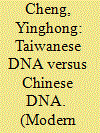

|
|
|
|
|
| Summary/Abstract |
The article analyses how population genetics has impacted on nationalist discourses across the Taiwan Straits and affected the relationship between Taiwan and China since the 1990s. In Taiwan this cutting-edge science has helped to construct a native-based and Taiwan-centred national identity through promoting indigenous peoples’ rights, rejecting a blood-based, cross-Straits nationalism, and founding a pan-Pacific indigenous peoples’ community through genetic links and cultural affinity. In China, after subverting the nationalist myth of Peking Man (a Homo erectus group believed to be the common ancestor of the Chinese) by analysing genetic data, the same group of Chinese genetic scientists have constructed another nationalist myth of a genetically homogenous nationhood. Such a discourse not only valorizes Chinese nationalism through claiming a DNA-based Chineseness across ethnic distinctions but also asserts genetic links between China and Taiwan, therefore providing a ‘scientific’ basis for China’s nationalism in the new century.
|
|
|
|
|
|
|
|
|
|
|
|
|
|
|
|
| 8 |
ID:
163299


|
|
|
|
|
| Summary/Abstract |
He never stood a chance. His first mistake was looking for food alone; perhaps things would have turned out differently if he’d been with someone else. The second, bigger mistake was wandering too far up the valley into a dangerous wooded area. This was where he risked running into the Others, the ones from the ridge above the valley. At first, there were two of them, and he tried to fight, but another four crept up behind him and he was surrounded. They left him there to bleed to death and later returned to mutilate his body. Eventually, nearly 20 such killings took place, until there was no one left, and the Others took over the whole valley.
|
|
|
|
|
|
|
|
|
|
|
|
|
|
|
|
|
|
|
|
|